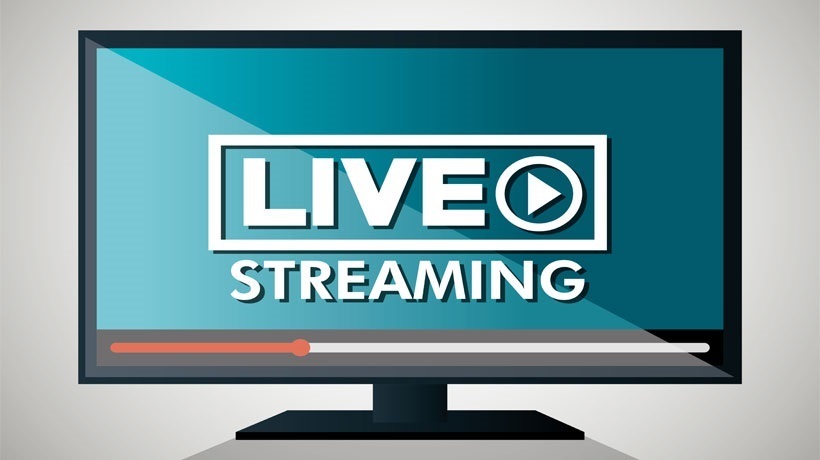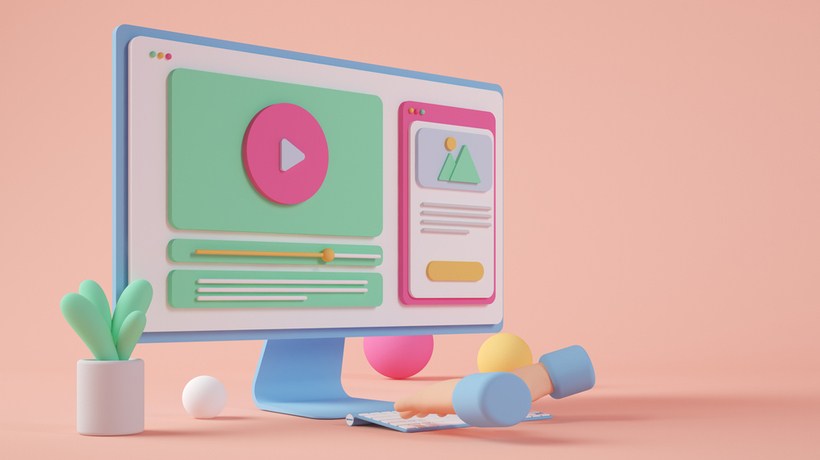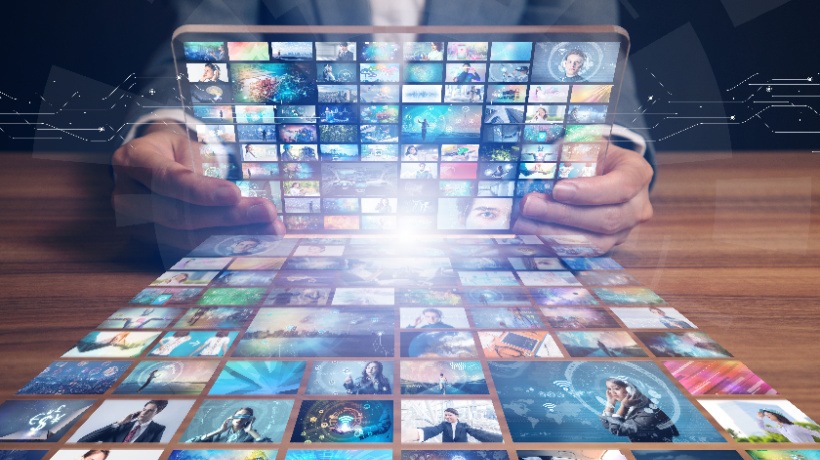How Using Live Streaming For Education Is Going To Change The Future Of Learning
“In the future, students will feel less inclined to spend 4 years in high school learning the basics, plus another 4 years in college, especially when the first two years are simply covering the basics yet again. Today, a thirteen year old with an email address and access to the internet can sign up at Khan Academy and complete courses of study in a variety of academic disciplines, all for free.” - Ethan Dunwill
This is our reality. But what does the future hold for education as we know it, and how will using live streaming for education effect changes? Here, then, are 8 ways live streaming is going to change the future of learning.
1. Methodology Of Teaching
In the past, we traditionally learned by sitting in a classroom and listened to a boring “lecture” on a particular subject from a curriculum prepared by a school board, as “required” study. A few weeks later we are given a revision sheet and told to take a test to see how well we had “learned”. The end result was that the geniuses among us used to “cram” the night before the exam, ended up with an ‘A’, or a 95, and the remainder of us were graded on a curve based on his or her results.
Fast-forward three months later and this same student, when asked, is clueless about the material for which the high grade was given. All this means is that the student didn’t really learn the material, and that’s one of the reasons traditional methodology in teaching has failed. Using live streaming for education changes the methodology of teaching.
With live streaming, students will be able to watch the experts in their field as they solve problems in real time. This is more conducive for learning, as studies show, we learn more when we are able to visualize. A good example of this is the Livecoding.tv platform, where thousands of coders learn to code every day by watching engineers code live.
2. Performance Metrics
This is probably one of the most profound changes that will affect the future of education certainly from the administrative standpoint. With this, administrators will be able to create and test new methodologies conducive to the 21st century student, who does not learn via traditional teaching methods.
The live streaming platform of the future will integrate authoring tools that will allow teachers and administrators to automatically detect students’ preferences and requirements, enabling them to customize the online learning experience for the student. They will also be able to automatically assess students’ knowledge and skillset.
3. Reduction In Cost
In the not-so-distant future, live streaming will change the future of education by drastically lowering the cost. For even if live streaming sites charge a subscription for their service, this will still be significantly less than the astronomical cost of education today. For example, the average school fee for a semester at a public high school in Jamaica, is approximately, US$120, plus another $120 for books.
In addition, there are auxiliary fees to pay, and transportation/lunch costs to factor in. All in all, a parent can spend up to US$2000 per semester to send a 14-year-old to school. This figure could be immensely higher in other parts of the world.
With live streaming, on the other hand, the biggest cost will be the monthly Internet and electricity cost, as based on present trend and what is foreseen for the future, subscriptions should run about $50/month, $200/semester. You do the math.
4. Interactivity
Another way live streaming will change the future of education is through interactivity. Live steaming allows interaction above and beyond the classroom experience. Think Facebook Live. On Facebook Live users can “like” and “comment” on their favorite videos.
They can also share them. Users can be anywhere in the world. With live streaming, teachers and students can have face-to-face interactions no matter their geographical location. Viewers on a live stream can ask the teacher questions via chat, while watching the lesson.
The videos are recorded, and afterwards, students can share them with their peers, other teachers can evaluate and give suggestions to the teacher, and the material can be “liked” and commented on, as on Facebook Live. With live streaming, students can “reach out beyond the walls of their classrooms to interact with other students, other teachers, and renowned authors, scientists, and experts to enhance their learning.” (Hadley Ferguson, Edcamp foundation).
5. Collaboration
Piggybacking off interactivity is collaboration; another way live streaming will change the future of education. Presently, companies like Cisco and IBM are using the live streaming platform to hold interviews, employee on-the-job trainings, meetings, etc. It is no big stretch, within the educational context, for teachers and students to collaborate among themselves, and with parents and even administrators, when necessary.
Group projects can be completed by using a collaboration software. Live streaming brings all the players together, who would have been physically handicapped because of their geographical location. For example, due to other engagements necessary for tenureship, college professors often find it difficult getting to their classes on time, but with live streaming, they can still conduct their classes from wherever they are.
6. Accessibility And hireability
Another way live streaming will change the future of education is through accessibility and hireability. What this means is, teachers and students will be more accessible to persons looking to hire. We were raised to believe in order for us to get a meaningful job we had to finish high school, go to college, then apply for the job of our dreams.
Sites like Livecoding.tv is showing that that is a thing of the past. Recently, Dyerrington and JDdesign were both hired by companies in Baltimore and San Francisco, all because representatives of the respective companies watched them code live.
Education of the future will facilitate lower unemployment rates, as students who are performing well can be hired on the spot at whatever age they are showing proficiency. Teachers, too, can be hired to do contractual work for individuals, companies, and even nations, as they are now accessible worldwide via live streaming.
7. Diversity
As a follow-up to #1 above is diversity, and we are not talking about racial equality, although that playing field certainly gets leveled on live streaming platforms. Instead, we’re talking about the diversity of subjects that students can learn. The curriculum of the future will drastically change, as more and more teachers will be able to introduce aspects of a subject area that were not possible, due to the nature of the subject. Let’s use music as an example. On Livecoding.tv, live-coded music is now “a thing”.
Sam Aaron, a British engineer, is one of the pioneers of modern live coding music. He developed the software, SonicPi, which is used for, among other things, teaching music in schools. Meanwhile, fellow British engineer, Joseph Wilk, uses SonicPi and Ruby to bend light sample. He writes code to generate music on Livecoding.tv.
With live streaming, Music teachers the world over will be able to utilize live streaming platforms to assist students to identify music patterns, etc., and so change the future of education.
8. Mobile Learning
Mobile learning has become the new “shiny object”, we love to possess and spend time playing with, but unlike most shiny objects, which soon lose their appeal, mLearning, as it is affectionately called, is here to stay. According to John Sherman in his article Why You Need To Start Thinking About Mobile Learning, recent studies found 59% of students (in the United States), had completed some sort of coursework on their mobile phone, which is an indication of the direction in which education is changing in the future.
He lists as benefits to mobile learning, higher retention rate, and the ability to access a wide range of multimedia, among other things. The ubiquitous nature of this device is contextualized when we read reports like TIME’s Qualcomm survey stating that 84% of respondents could not go a day without their cellphones in their hands, while 44% would leave their wallets at home, but would never leave their cellphones. Considering that the illiteracy rate globally is 89.5% among young people, this is a huge demography to target for mLearning. Live streaming is almost synonymous to mLearning, as it is via this medium that one can watch live streams, and learn. mLearning allows students to take “classes” at any time, from anywhere in the world.
Final Thought
Live streaming has been around for a while, and will be here for a while. Meerkat, Periscope, and Facebook Live gives us a glimpse into what the future holds for live streaming. Websites such as YouTube allows people from all over the world to stream their videos and to connect with other people via live streaming.
The education industry will not be immune from its presence. In fact, the question is not if, but when live streaming does change the future of education.
And in case you’re wondering why we’re picking on Livecoding in this article, the truth is, as far as we know, that is the only live streaming platform currently available with examples relevant to the article. If you know of others, please let us know in the comments box below.









